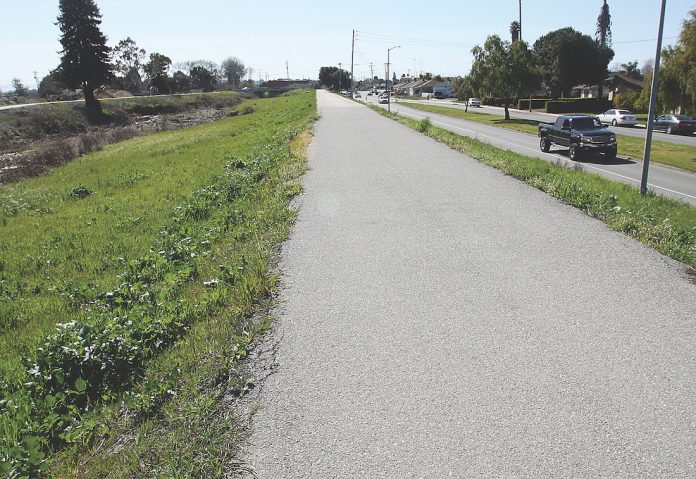By Congressman Jimmy Panetta and Supervisor Zach Friend
As your federal and local representatives, we take very seriously the job of ensuring our communities are safe and resilient. To this end, we have been working closely with the U.S. Army Corps of Engineers to make critical repairs to the infrastructure on the Pajaro River, as part of the Army Corps’ Pajaro River Flood Risk Management Project.
This month, we proudly took critical, long-overdue steps forward to provide 100-year flood protection to our communities in the Pajaro Valley. Through our combined efforts at the local and federal level to pressure the Army Corps, we have not only authorized but also secured funding for necessary infrastructure repairs on the Pajaro River. This action is 53 years in the making.
The Flood Control Act of 1944 granted the Army Corps authority to construct a flood control project on the Pajaro River. The Corps completed this project in 1949, but six years later, the levees were breached by a major storm.
Subsequently, the 1966 Federal Flood Control Act authorized a new and more robust project for the Pajaro River. Although the Corps has completed piecemeal repairs on the levees, no significant progress has been made since 1966 to move this project forward. In the meantime, the levee system has failed four times, caused hundreds of millions of dollars in damage, led to the displacement of hundreds of residents, and tragically, resulted in the loss of life.
Thus, for decades, the communities in the city of Watsonville and town of Pajaro have lived with the uncertainty of an inadequate levee system unable to withstand the threat of a devastating flood.
Rightfully so, many residents have been frustrated by a lack of urgency from the Army Corps to permanently fix the levee system and move forward with this project. Inaction on the part of the Corps has been largely the result of the agency’s reliance on funding projects with a high “Benefit-to-Cost Ratio,” or BCR. The BCR formula, unfortunately, has led the Corps to prioritize projects in affluent areas, putting property values ahead of projects that save lives.
Moreover, the Army Corps’ BCR does not consider the reality that economically-disadvantaged areas do not necessarily imply a lack of economic returns. While per capita income in the Pajaro Valley is less than half of both the state and national averages, local communities provide the workforce and infrastructure for some of the most productive farmland in the world, including the Pajaro Valley’s $750 million per year agriculture industry.
Through our persistence, with the help of county and city staff, on December 12, 2019, we overcame that hurdle, when the Army Corps Director of Civil Works James Dalton signed the final feasibility report for the Pajaro River project. This report allows the project to finally move out of its feasibility stage and into its “Preconstruction, Engineering, and Design” (PED) phase.
Just days later, Congressman Panetta secured language in the Fiscal Year 2020 federal spending bill that reserves at least $1.5 million for Army Corps funding for PED on flood control projects, like the Pajaro River project, which are located in economically-disadvantaged communities that have suffered from fatal flooding.
Through Supervisor Friend’s advocacy, the state of California has also expressed strong support for the Pajaro River project, investing $114 million for this project through Assembly Bill No. 489. While Governor Newsom signed this bill into law in late September of this year, the funding has only now become available, since it was contingent on the singed final feasibility report from the Army Corps.
For the first time in 53 years, we now have both the federal authority and the funding to take real steps forward for the Pajaro River project. Beyond the near-term security this project will provide to communities on the Central Coast, this progress represents a worthwhile investment in the long-run. For every dollar invested in flood mitigation, we save six dollars in long-term benefits.
We certainly have more work to do as we move this project through its PED phase and then its construction phase, and ultimately its operation and maintenance phase. However, the wheels are finally turning, and once completed, the final product will be the result of a truly collaborative process between county and city staff, local elected officials, the Army Corps, and Congress.
•••
Contact Santa Cruz County Supervisor Zach Friend at za*********@*************ty.us. The thoughts and opinions in this entry are not necessarily those of the Pajaronian.












